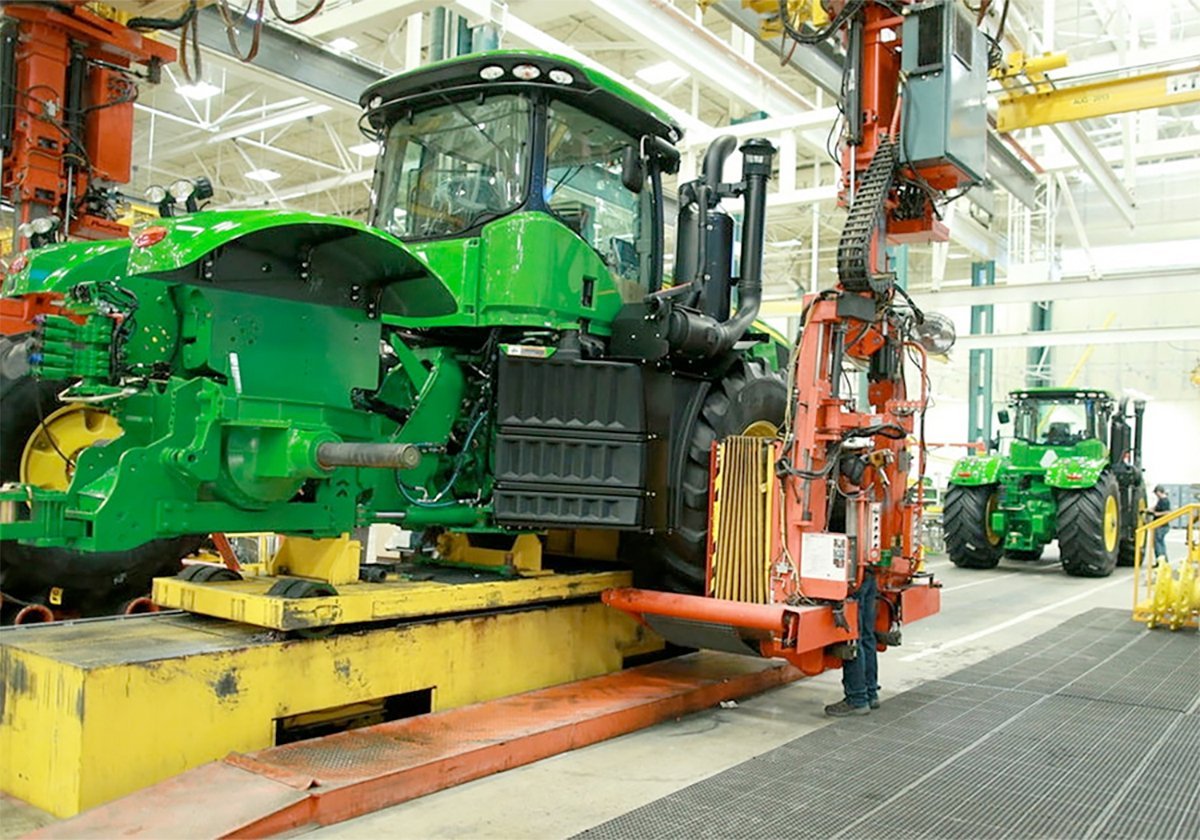On Jan. 24, Potash Corp. of Saskatchewan announced fourth-quarter earnings of $1.16 per share, a 100 percent increase over the same period last year and the highest quarterly earnings in company history. The following are excerpts from the quarterly report that discusses how PCS expects to prosper on the basis of strong grain prices.
Increasing demand for crops grown around the world reduced the combined stocks-to-use ratio for grain and soybeans – crops that compete with one another for planted acres – to the lowest level in recorded history.
Read Also

Trump’s trade policies take their toll on Canadian producers
U.S. trade policy as dictated by president Donald Trump is hurting Canadian farmers in a multitude of ways.
As a result, agricultural commodity prices continued to increase in the fourth quarter, providing farmers with the means and motivation to increase fertilizer use to achieve higher yields and protect soil fertility.
While the fourth quarter historically has allowed fertilizer producers to build inventories in anticipation of the coming planting season, strong demand reduced 2007 year-end inventories of all three nutrients (potash, nitrogen and phosphate).
Compared to previous five-year averages, North American producer inventories at year-end were down 26 percent for potash, while urea inventories dropped 17 percent and diammonium phosphate (DAP) was down 21 percent.
With this tight supply, the growth in demand led to price increase announcements, especially in potash, which continued to sell on an allocation basis.
The phosphate market saw significant price increases in response to tight inventories, strong demand and rising input costs.
In nitrogen, global agricultural demand growth more than offset a significant increase in urea exports from China, and US prices for that product remained high. Urea imports by India continued to rise sharply, moving from 200,000 tonnes in 2003 to a record 6.7 million tonnes in 2007.
Ocean freight costs peaked at a record high during the quarter due to strong global demand for commodities and other products, as well as increased congestion that lengthened loading-unloading times at certain ports.
Outlook
The growth in global population and strengthening of world economies that is driving demand for agricultural products and fertilizers is expected to continue.
China has seen strong increases in its gross domestic product annually for over 15 years and double-digit growth in the past five, while India, southeast Asia, Brazil and Latin America have more recently been experiencing excellent economic growth.
An increasing number of people in these areas now have the money and the desire for a higher standard of living, and are developing appetites for the protein-rich diets that westerners have enjoyed for decades. Rather than leveling off, this trend is gaining momentum.
The world has been enjoying unsustainably low grain prices for many years by drawing down inventories. Grain consumption has exceeded production in seven of the past eight years (and the USDA 2007-08 crop year forecast is expected to extend this further), so this decline in grain stocks began before biofuels became much of an additional draw on global crop production.
The world’s wheat and coarse grains stocks-to-use ratio is at a record low after being adjusted downward again in January 2008 to 14.1 percent, just a 1.7-month supply.
This is resulting in further significant increases in crop prices around the world. With agricultural land declining on a per capita basis, farmers are working to improve yields to meet rising global food demand.
With rising prices for crops and crop nutrients, $1 invested in appropriate fertilization can generate approximately a $3 return through higher yields.
Expectations for this type of return can vary depending on many factors such as type of crop, climate, soil quality or access to water. For some crops, such as Brazilian sugar cane and Malaysian oil palm, the payback – with current crop and fertilizer prices – is typically much greater than the three to one (investment return) relationship.
This environment makes the economics of the fertilizer business, especially potash, very attractive.
For a U.S. corn farmer, average farmgate corn prices have increased by $2 per bushel over the past two years, which roughly translates into a $300 per acre boost in farm returns on a yield of 150 bu. per acre.
By comparison, a $100 per short ton increase in North American potash prices adds only $0.03 per bushel, or $4.50 per acre, to the cost of producing corn. A similar economic model exists for soybeans and wheat.
This relative inelasticity to price leaves demand undamaged, even in the face of fertilizer price increases.














